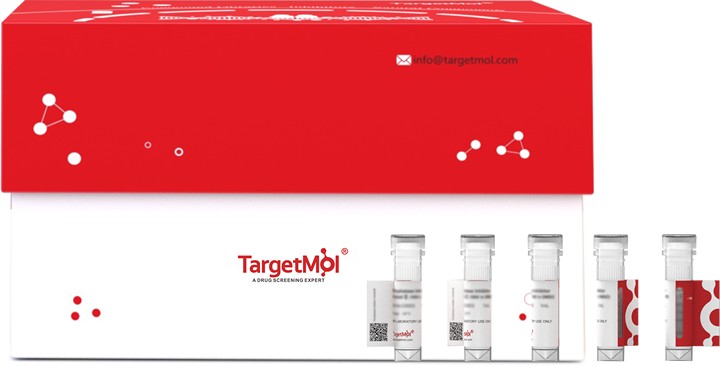- 全部删除
 您的购物车当前为空
您的购物车当前为空
acnB Protein, E. coli, Recombinant
Escherichia coli contains two major aconitases (Acns), AcnA and AcnB. They are distantly related monomeric Fe-S proteins that contain different arrangements of four structural domains. acnA is specifically subject to SoxRS-mediated activation, whereas acnB encodes the major aconitase that is synthesized earlier in the growth cycle than AcnA. It is concluded that AcnB is the major citric acid cycle enzyme. Aconitate hydratase 2 (acnB) catalyzes the isomerization of citrate to isocitrate via cis-aconitate as well as the dehydration of 2-methylisocitrate to cis-2-methylaconitate, thus it functions as the major citric-acid-cycle enzyme during exponential growth. Escherichia coli acnB serves as either an enzymic catalyst or a mRNA-binding post-transcriptional regulator, depending on the status of its iron sulfur cluster. AcnB represents a large, distinct group of Gram-negative bacterial aconitases that have an altered domain organization relative to mitochondrial aconitase and other aconitases.

acnB Protein, E. coli, Recombinant
| 规格 | 价格 | 库存 | 数量 |
|---|---|---|---|
| 100 μg | ¥ 4,460 | 5日内发货 |
产品信息
| 生物活性 | Activity testing is in progress. It is theoretically active, but we cannot guarantee it. If you require protein activity, we recommend choosing the eukaryotic expression version first. |
| 产品描述 | Escherichia coli contains two major aconitases (Acns), AcnA and AcnB. They are distantly related monomeric Fe-S proteins that contain different arrangements of four structural domains. acnA is specifically subject to SoxRS-mediated activation, whereas acnB encodes the major aconitase that is synthesized earlier in the growth cycle than AcnA. It is concluded that AcnB is the major citric acid cycle enzyme. Aconitate hydratase 2 (acnB) catalyzes the isomerization of citrate to isocitrate via cis-aconitate as well as the dehydration of 2-methylisocitrate to cis-2-methylaconitate, thus it functions as the major citric-acid-cycle enzyme during exponential growth. Escherichia coli acnB serves as either an enzymic catalyst or a mRNA-binding post-transcriptional regulator, depending on the status of its iron sulfur cluster. AcnB represents a large, distinct group of Gram-negative bacterial aconitases that have an altered domain organization relative to mitochondrial aconitase and other aconitases. |
| 种属 | E. coli |
| 表达系统 | E. coli |
| 标签 | Tag Free |
| 蛋白编号 | P36683 |
| 别名 | yacJ,yacI |
| 蛋白构建 | A DNA sequence encoding the E.Coli (strain K12) acnB (P36683) (Met 1-Val 865) was expressed and purified. Predicted N terminal: Met 1 |
| 蛋白纯度 | > 97 % as determined by SDS-PAGE |
| 分子量 | 93.5 kDa (predicted); 95 kDa (reducing conditions) |
| 内毒素 | Please contact us for more information. |
| 缓冲液 | Lyophilized from a solution filtered through a 0.22 μm filter, containing 40 mM Tris, 1 mM DTT, pH 8.2. Typically, a mixture containing 5% to 8% trehalose, mannitol, and 0.01% Tween 80 is incorporated as a protective agent before lyophilization. |
| 复溶方法 | A Certificate of Analysis (CoA) containing reconstitution instructions is included with the products. Please refer to the CoA for detailed information. |
| 存储 | It is recommended to store recombinant proteins at -20°C to -80°C for future use. Lyophilized powders can be stably stored for over 12 months, while liquid products can be stored for 6-12 months at -80°C. For reconstituted protein solutions, the solution can be stored at -20°C to -80°C for at least 3 months. Please avoid multiple freeze-thaw cycles and store products in aliquots. |
| 运输方式 | In general, Lyophilized powders are shipping with blue ice. |
| 研究背景 | Escherichia coli contains two major aconitases (Acns), AcnA and AcnB. They are distantly related monomeric Fe-S proteins that contain different arrangements of four structural domains. acnA is specifically subject to SoxRS-mediated activation, whereas acnB encodes the major aconitase that is synthesized earlier in the growth cycle than AcnA. It is concluded that AcnB is the major citric acid cycle enzyme. Aconitate hydratase 2 (acnB) catalyzes the isomerization of citrate to isocitrate via cis-aconitate as well as the dehydration of 2-methylisocitrate to cis-2-methylaconitate, thus it functions as the major citric-acid-cycle enzyme during exponential growth. Escherichia coli acnB serves as either an enzymic catalyst or a mRNA-binding post-transcriptional regulator, depending on the status of its iron sulfur cluster. AcnB represents a large, distinct group of Gram-negative bacterial aconitases that have an altered domain organization relative to mitochondrial aconitase and other aconitases. |




